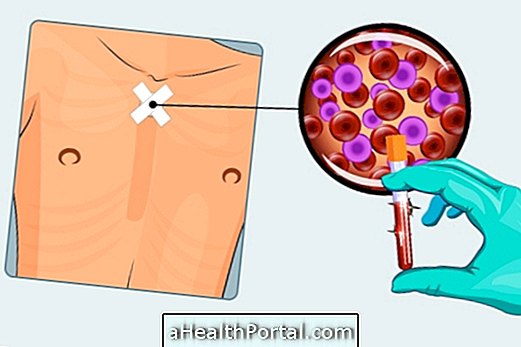Biopsy is an invasive test used to examine the health and integrity of various tissues in the body such as skin, lung, muscle, bone, liver, kidney, or spleen. The goal of the biopsy is to observe any change, such as changes in shape and size of cells, and is useful even to identify the presence of cancer cells and other health problems.
When the doctor asks for a biopsy it is because there is a suspicion that the tissue has some alteration that can not be seen in other exams, and therefore, it is necessary to perform the examination promptly in order to diagnose the health problem to start the treatment as well possible.

When it may be necessary to perform a biopsy
In most cases biopsies are necessary when there are suspected cell changes, such as suspected cancer or when there is a sign or wart on the skin with suspicious features.
When infectious diseases exist biopsy can help identify the agent that is the source of the infection and in case of autoimmune diseases can help to identify if there are changes in the internal organs or tissues.
How is the biopsy done?
In most cases, biopsies are done under local anesthesia or with light sedation, which is usually a quick, painless procedure that does not require hospitalization. During this procedure the doctor will collect the material, which will be later analyzed in the laboratory.
In the case of internal biopsies, the procedure is usually guided by images, using techniques such as computed tomography, ultrasound or magnetic resonance, for example, that allow the observation of organs.
On the following days, the site where the biopsy was performed needs to be cleaned and disinfected according to the indications given by the doctor, and in some cases it may be recommended to take antibiotics to aid in healing.
What are the most common biopsies
There are several types of biopsies that can be performed, and some of the most common are:
- Biopsy of the uterus: This is to identify possible changes in lining tissue of the uterus that may indicate abnormal growth of the uterus, uterine infections or cancer, for example;
- Prostate biopsy: to identify possible changes in the prostate;
- Liver biopsy: used to diagnose cancer or other liver lesions such as cirrhosis or hepatitis B and C;
- Marrow biopsy: helps in the diagnosis and accompanies the evolution of diseases in the blood like leukemia and lymphoma.
- Kidney biopsy: It is usually performed when there are proteins or blood in the urine, helping in the identification of kidney problems.
The type of biopsy to be performed depends on the problem to be identified. The result of the biopsy may be negative or positive and the doctor can always ask for a repeat of the exam in order to eliminate the false positive hypothesis.
In addition to the traditional biopsy there is also a liquid biopsy, which is a blood test to identify and analyze cancer cells, and in some situations an alternative to classical biopsy.

























